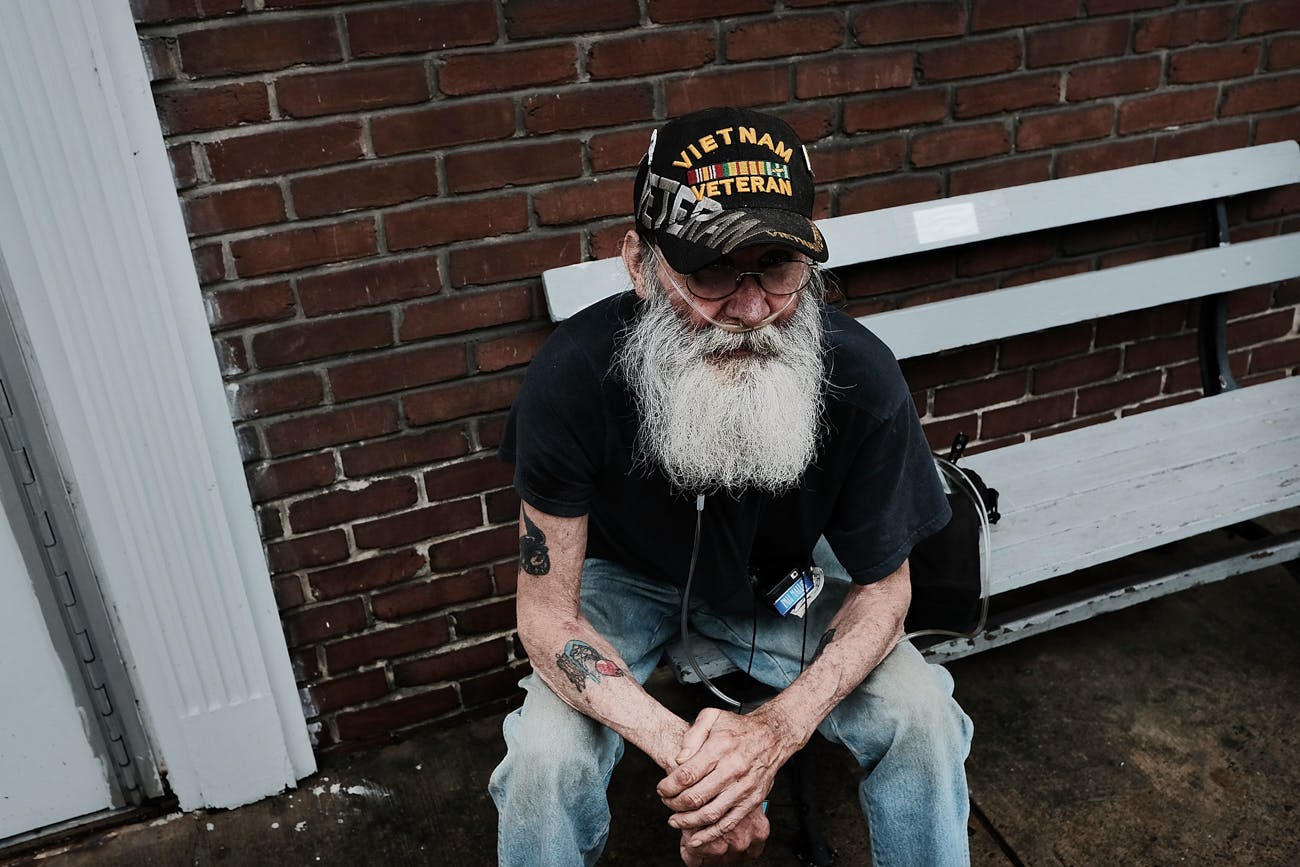
Steven Goehrig, a Vietnam veteran, pauses
downtown in the struggling city of Williamsport, which has recently seen an epidemic of opioid use among its population on July 13, 2017 in Williamsport, Pennsylvania. With a population just over 29,000, Williamsport has a poverty rate of over 27%. As cities across the nation continue to cope with an epidemic of opioid use, often in areas with few employment prospects, Williamsport recently experienced 36 heroin overdoses in a 24 hour period. (Photo by Spencer Platt/Getty Images)
Veterans Being Denied Medical Cannabis Are Crushed By Pills, PTSD And Suicide |
01.01.2022Veterans Being Denied Medical Cannabis Are Crushed By Pills, PTSD And Suicide
Nestor Vinelli started taking pain medication when he was still on active duty. Since then Vinelli has lost his house, family, and nearly his life.
Nestor Vinelli started taking pain medication when he was still on active duty in the United States military. He had come down with Achilles tendinitis during training, a common condition among runners, affecting the tendon that connects the calf muscles to the heel. Treating Achilles tendinitis typically involves scaling back one’s physical activity and giving the tendon time to heal. But military culture doesn’t always permit time for rest.
“If I would have stopped training, basically I would have lost faith in the rest of the guys. Because you can’t look weak.” He told me. Instead, he turned to pain medication to help him keep training. “I was on Vicodin, oxycodone, OxyContin, methadone, Dilaudid, morphine, Fentanyl patches. Others I can’t remember.” Vinelli tells me.
It isn’t uncommon for soldiers like Vinelli—a Section Sargent during his active duty with the United States Military—to get hooked on opioids. Just like the sports industry, the United States military often uses pain medication as a way to keep soldiers active even when they’re experiencing pain. This is one of the reasons why, according to the National Institute on Drug Abuse, “Rates of prescription opioid misuse are higher among service members than among civilians.”
But this decision to remain active through the pain meant the condition of Vinelli’s Achilles tendon got worse. So did his addiction to his pain medication.
Eventually, Vinelli’s persistence caused him to tear his Achilles in multiple places, affecting the use of his left leg—even after the tendon healed. “I couldn’t run more than a quarter mile; I couldn’t stand very well without pain. I literally couldn’t even stretch properly.” As a result, Vinelli was removed from active duty and went into the reserves.
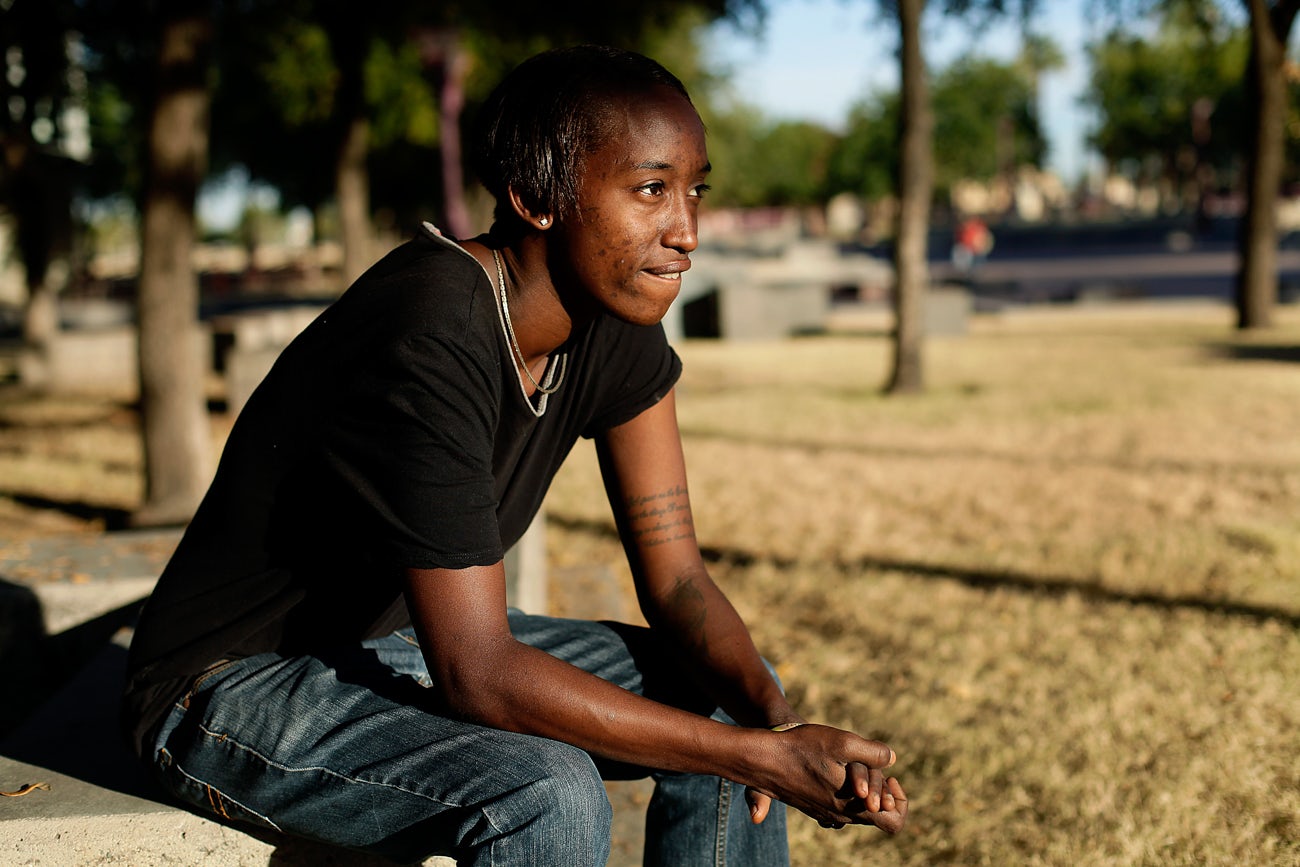
The pain continued to affect Vinelli’s daily life, spreading from his leg to his back, where a failed surgery intended to relax his pain only made the problem worse. “I had a family to support, and the only way that I could continue working was to continue on these pills,” Vinelli tells me. But as the pain continued to escalate, so did his use of pain medications.
“When I left [active duty] it just continued where I would go to [doctors] and say ‘hey, these aren’t working now. I’m taking more than I’m supposed to’ and they would up the milligrams” Vinelli tells me. “I was prescribed 30mg Oxycontin and 40mg Oxycodone, and I was supposed to be able to take up to 9 a day.”
Soon, the pills Vinelli was taking became less about pain and more about feeding his growing addiction. He started exaggerating to doctors to get more pills and higher dosages. “Seeing a sinking ship,” Vinelli tells me, his now ex-wife, decided to leave him. It wasn’t long before Vinelli started losing his home, too.
Depression took hold, and he began having thoughts of suicide. “When I started losing my house, I was hanging around the wrong kind of people. And I realized that I was depressed and I had people talking to me about depression, and they told me about these pills, Xanax.” Said Vinelli. “I thought ‘well, I already take pills.’ So I went and bought some [Xanax] and ended up getting into a car accident.” Vinelli tells me. When police arrived, they found the Xanax and arrested him. Vinelli’s ex-wife used this police altercation to prevent him from seeing his children.
Vinelli had officially hit rock bottom.
Vinelli’s Oxy experiences
“It got to the point where I was literally sitting on my bed in my bedroom, and I had both bottles of Oxy’s in my hand.” Said Vinelli. “So I took them, and put them into my mouth.”
But then, his cell-phone rang.
It was his cousin, Michael, one of Vinelli’s closest family members. “I spit the pills back into my hand because I planned on taking them as soon as I got off the phone. He told me about something that he was planning on helping to heal veterans through cannabis.” By the end of the phone call, Vinelli threw the handful pills against the wall.
Vinelli’s injuries prevented him from going back to the army, so cannabis was no longer off-limits. His cousin sent him some THC and CBD infused edibles, which Vinelli found useful for treating his pain. “I was able to reduce the number of pills that I was taking because I wasn’t in so much pain.” He told me. Eventually, these cannabis products helped Vinelli wean himself off opioids entirely.
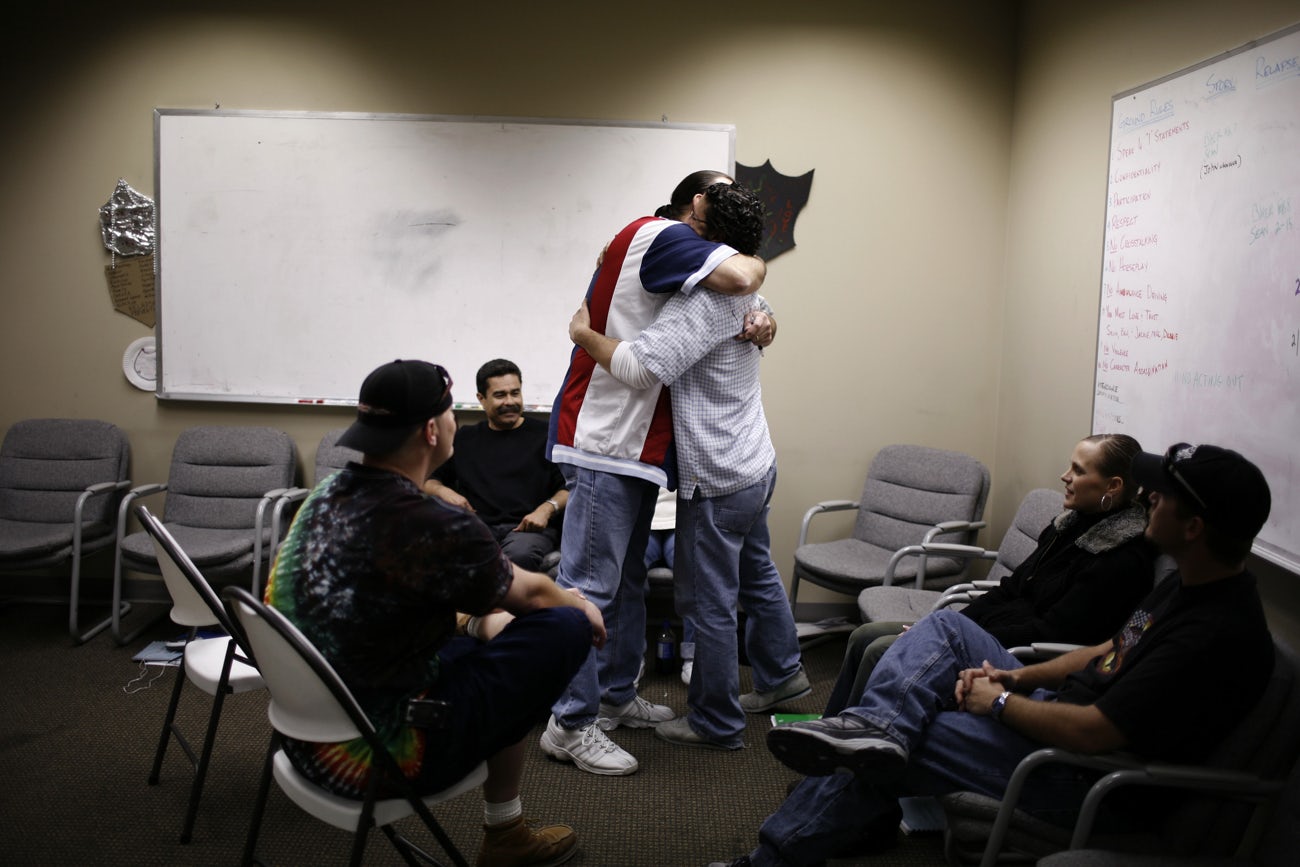
Vinelli isn’t the only veteran to have this type of experience. In fact, cannabis as an effective treatment for opioid addiction is something that researchers are discovering with studies spanning from New Mexico to British Columbia. It’s why researchers like Philippe Lucas with the Center for Addictions Research of British Columbia are beginning to call marijuana an “exit drug.”
Lucas recently shared pre-publication data with me, from “the largest survey of Canadian patients, of medical cannabis patients, ever conducted.” According to this study, 69% of respondents “say that they substitute in cannabis for prescription drugs.” Lucas concluded that, according to the study, the introduction of medical marijuana leads to “basically a 60% drop rate in terms of the opioid use, and a further 18.4% of those drugs were reduced by at least 75%.”
Another study found that states that legalized medical marijuana saw about a 25 percent reduction in the rate of prescription opioid overdose deaths.
In other words, Vinelli isn’t an isolated example of marijuana helping people to get off dangerous opioids. Numerous studies have demonstrated that cannabis is, in fact, an effective way to reduce patients’ addictions to opioids.
These findings are pertinent to veterans, who, according to studies, are 40 to 50 percent more likely to experience chronic pain than nonveterans. VA officials have found that about 50 percent of old-aged veterans suffer from chronic pain. And in the fiscal year of 2016 alone, the VA treated more than 66,000 veterans for opioid addiction.
This is largely due to the VA’s lax prescription practices, with soldiers and veterans alike commonly reporting being given a “cocktail” of opioids to address their pain issues. “They’re still prescribing pills left and right.” Says Vinelli. Among the pills prescribed to Vinelli for example, according to him, were Motrin, Vicodin, Roxicets, tramadol, morphine, Dilaudid, oxycodone and oxycontin.
One of the reasons for the VA’s lax prescription habits has to do with a movement that swept the healthcare industry in the mid-to-late 1990s.
Before the 90’s, opioids were almost exclusively used to treat chronic pain in terminal patients, like those with cancer, to improve their quality of life during their final days. Opioids work for these types of patients because, quite simply, addiction isn’t an issue for the terminally ill.
However, this all changed in the 1990’s, when prominent healthcare executives started making a case for opioids to be prescribed to nonterminal patients. One of the leading proponents of this movement was Dr. James Campbell, who in the 1990’s served as the president of the American Pain Society.
Dr. Campbell made an impassioned case to treat pain as “the fifth vital sign,” alongside body temperature, pulse rate, breathing rate and blood pressure. This movement successfully led to sweeping changes in the policies of major healthcare providers, including The Veterans Health Administration, which runs the largest healthcare system in the entire country.
In 1998, The Veterans Health Administration introduced a new policy that would ensure that their doctors treated pain as the fifth vital sign, and asked their patients about pain at every visit. And if their patients reported that they were experiencing pain, as most veterans do, then doctors were expected to prescribe pain medication.
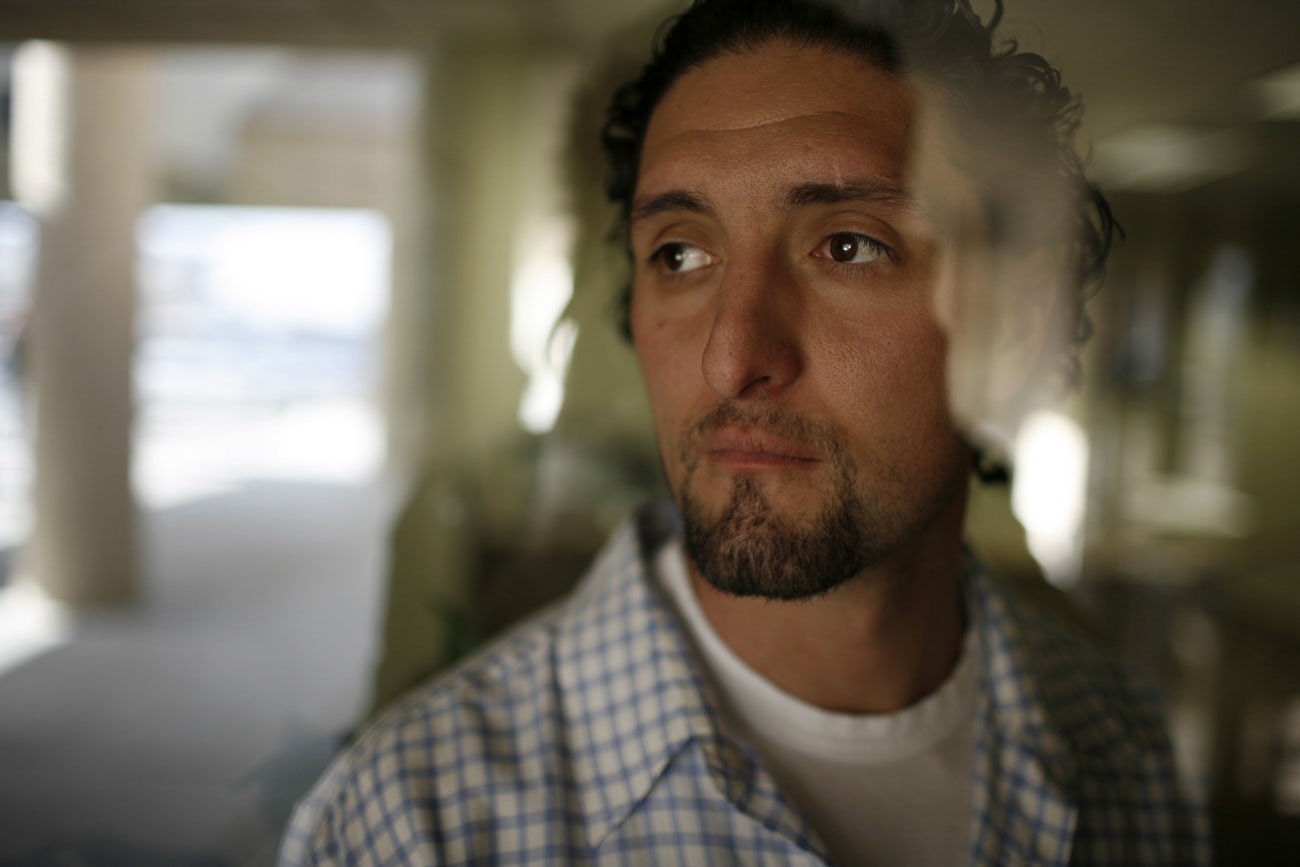
Marijuana and the United States Department of Veterans Affairs.
Unfortunately, despite multiple studies attesting to its efficacy, cannabis has never been accepted as a form of pain medication. As a Schedule I drug, soldiers aren’t allowed to use marijuana—even as a medication. This Schedule I status also prevents the VA from prescribing medical marijuana to veterans, even in states where it has been legalized (more than half of all U.S. states have legalized some form of marijuana).
This means that veterans like Vinelli, who typically get their healthcare coverage through the VA, only have access to more dangerous pain medications that can result in addiction and death.
This is particularly infuriating for veterans, the overwhelming majority of whom support the legalization of medical marijuana.
Just recently, The American Legion conducted a survey of 513 veterans and 289 caregivers from 39 states, which found that 81 percent of those polled said they wanted medical marijuana to be legalized at the federal level. One in five of respondents reported that they already use medical marijuana, and most of them are over the age of 60.
In a separate phone survey of over 800 veterans and veteran caregivers, 92 percent of respondents supported an increase of research into medical marijuana.
Marijuana and the United States Department of Justice.
The Drug Enforcement Administration, which operates under the Department of Justice (DOJ), is the governmental agency responsible for the rescheduling of marijuana. But current DOJ officials, most notably Attorney General Jeff Sessions and Deputy Attorney General Rod Rosenstein, have taken notoriously hardline stances in support of the continued criminalization of marijuana, and enforcement of draconian marijuana laws.
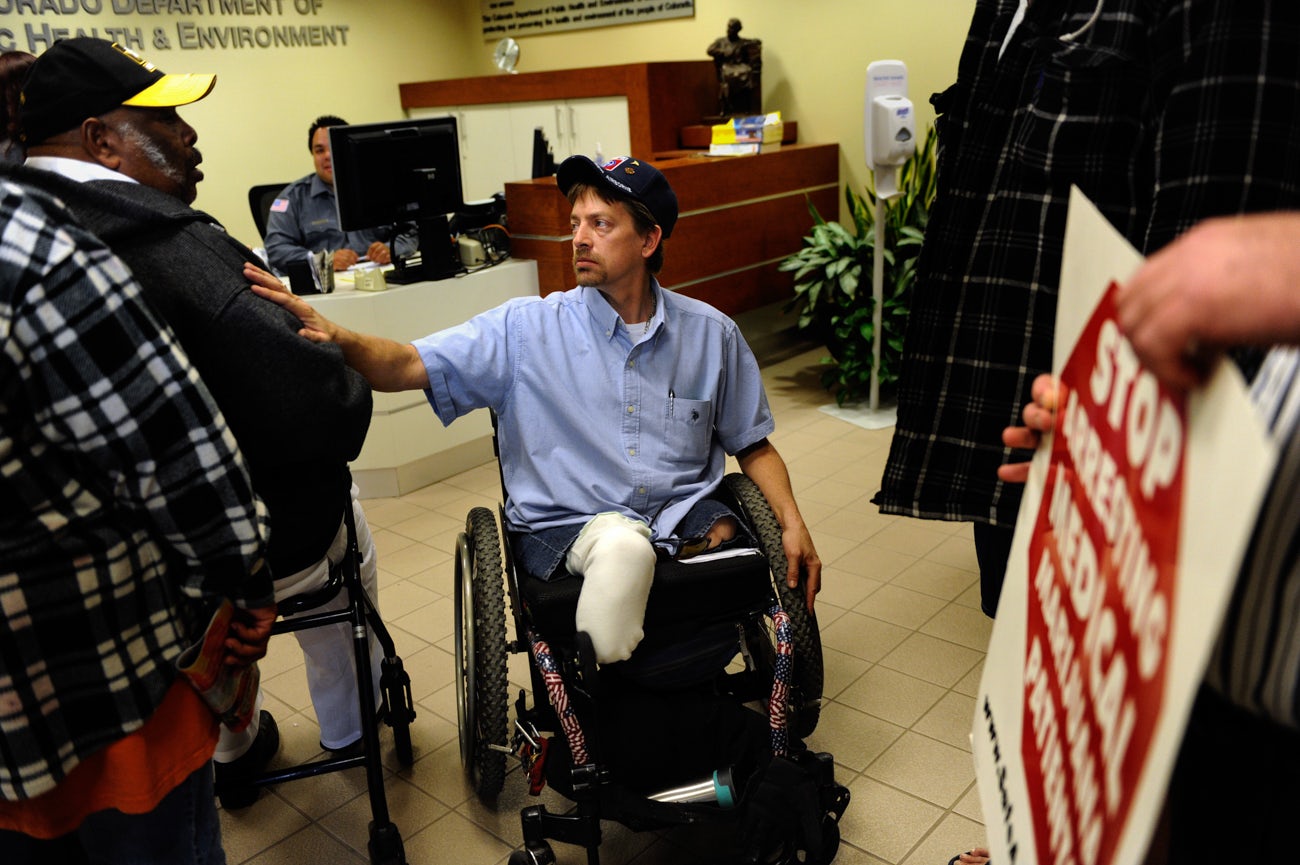
When I contacted the DOJ to talk about these veteran surveys, a Justice Department official, who asked not to be named, said, “The Department of Justice is committed to controlled substances research; indeed just a few months ago it worked with DEA on rescheduling Syndros, a THC-based drug that went through the FDA process. The scheduling scheme for marijuana and other drugs was created by Congress. It’s solely about, and has always been about, public health and safety.”
This kind of typical response from the DOJ not only deflects the department’s primary roll in rescheduling drugs like marijuana, but it’s also highly misleading.
For example, while this DOJ official claimed that Syndros is “THC-based,” it’s actually made with dronabinol, a synthetic form of THC, not the naturally occurring THC found in cannabis. Unlike cannabis, however, Syndros “may potentially result in an overdose,” according to the DEA itself. As VICE points out, it’s also been listed as possessing a “high potential for abuse,” and users of Syndros are at “an increased risk of experiencing serious adverse events.”
Syndros is also manufactured and sold by Insys Therapeutics, a pharmaceutical company known for highly unethical business practices. Currently, the company is embroiled in lawsuits for faking cancer patients to sell more of their drugs to patients who didn’t need them, some of whom ended up overdosing and dying. Last December, six Insys executives including former CEO, John Kapoor, were indicted on fraud and racketeering charges. Insys has also spent hundreds of thousands of dollars lobbying to prevent the legalization marijuana.
It’s telling that the DOJ’s best example of their “[commitment] to controlled substances research” was the rescheduling of a dangerous, synthetic drug made by a pharmaceutical company known for some of the most appalling Pharma scandals in recent memory.
Marijuana as an “Exit Drug.”
Researchers like Dr. Sue Sisley, who are actively pushing for more research into medical marijuana, report that the VA itself—despite the overwhelming support of veterans—similarly refuses to support medical marijuana in any meaningful way.
As a result, more and more veterans like Vinelli are forced to take matters into their own hands by seeking out cannabis-based treatment methods, without the help or support of the VA.
After discovering cannabis, Vinelli tells me he went from being “250 pounds, absolutely depressed, suicidal, my life was falling apart.” To now, where he’s established a flourishing business with other veterans, “ infusing everyday cooking ingredients with THC and CBD, for health reasons.”
With the help of cannabis, Vinelli was able to take his condition into his own hands, turn his life around for the better, and now supports other veterans to do the same.
But not every veteran is as lucky as Vinelli.
Currently, according to the VA, about 22 veterans commit suicide every single day, often as a result of severe PTSD—another condition that researchers like Dr. Sisley believe can be alleviated with medical marijuana. (The anecdotal evidence is certainly on her side.)
This continued obstruction of veterans’ access to medical marijuana by Congress, the Department of Justice, DEA and VA is leaving countless veterans unnecessarily burdened by opioid use disorders, chronic pain, PTSD and other conditions potentially treatable with cannabis.
Herb Recommended Products:
READ MORE










